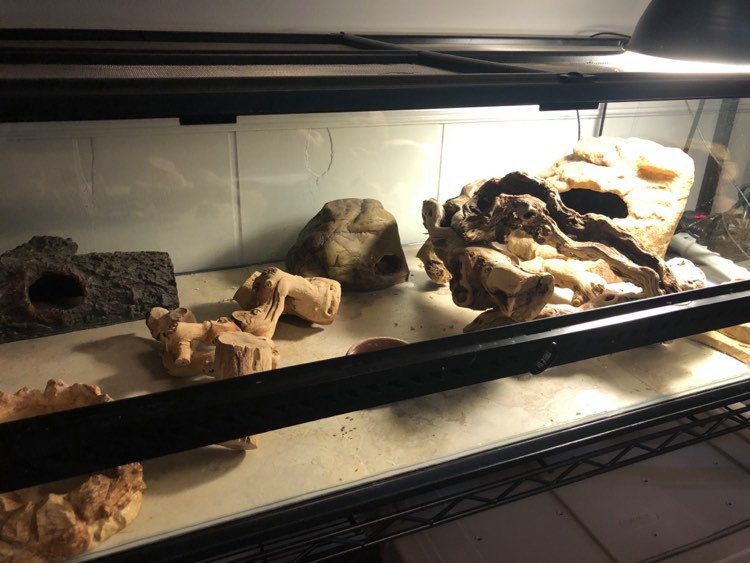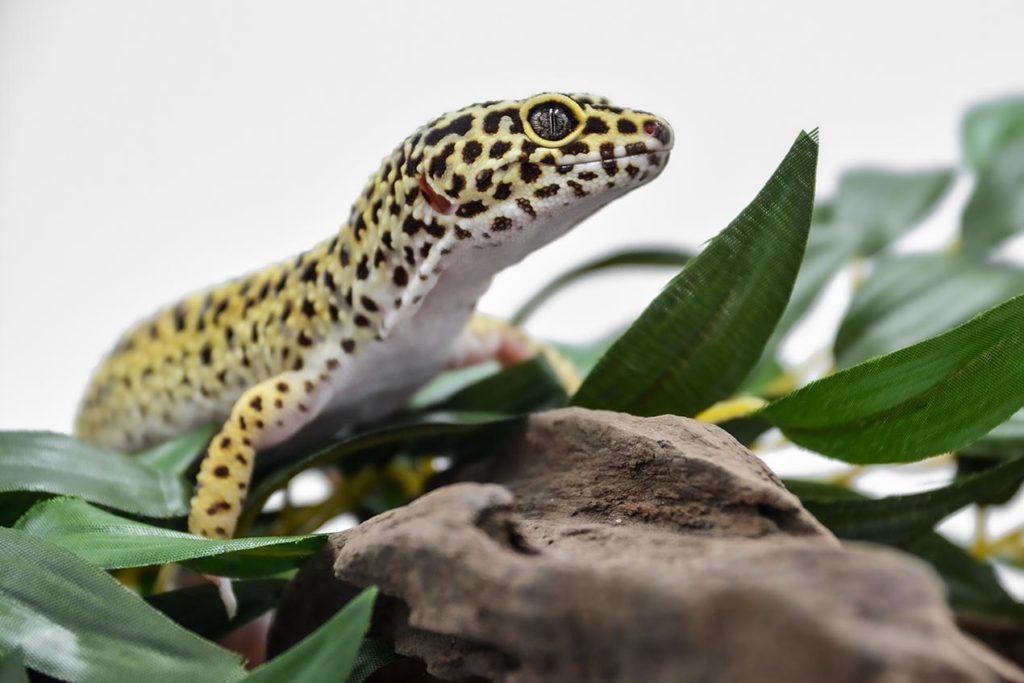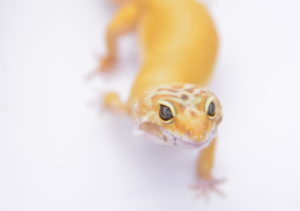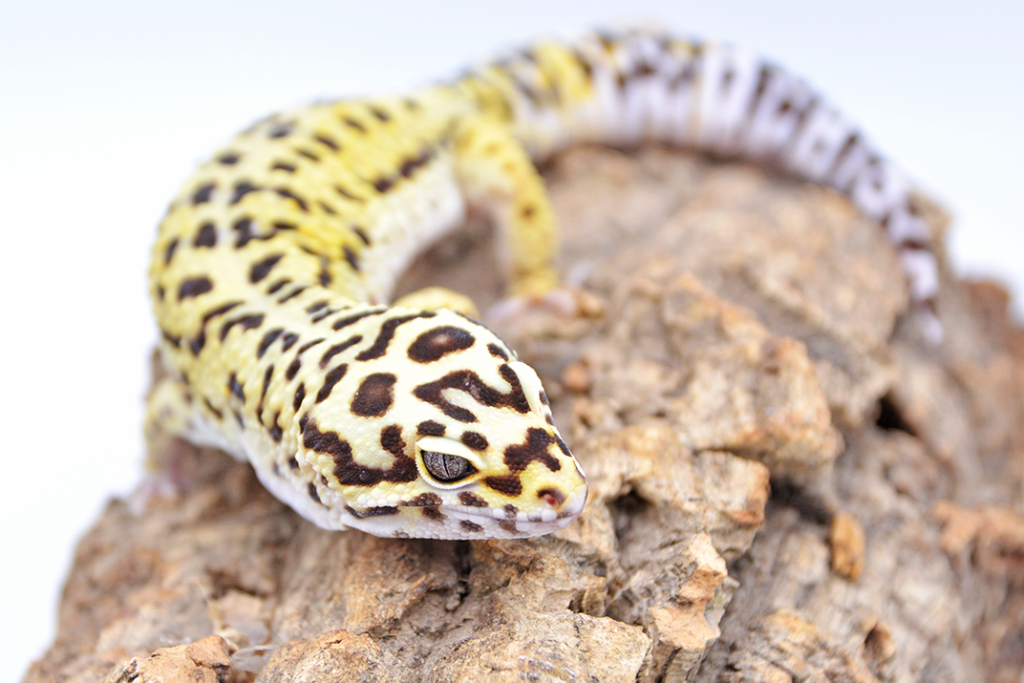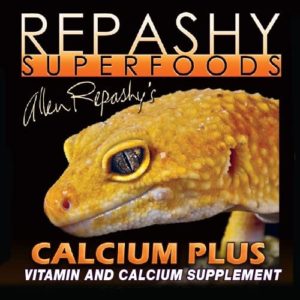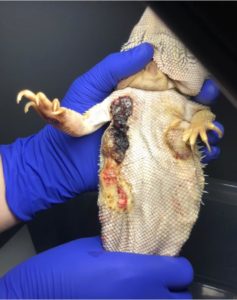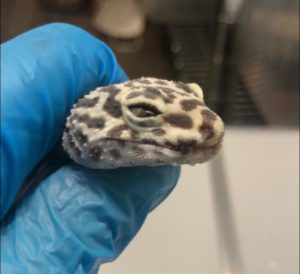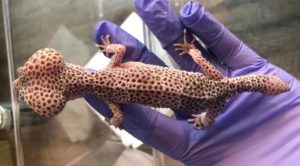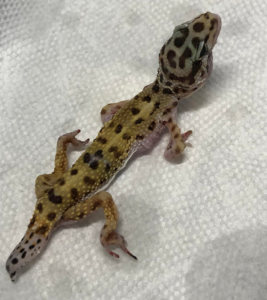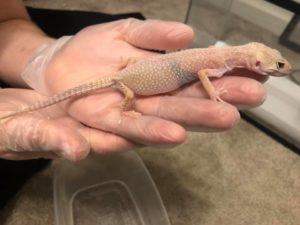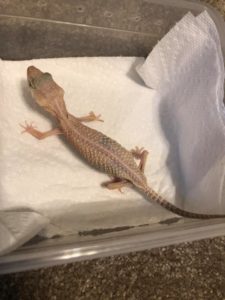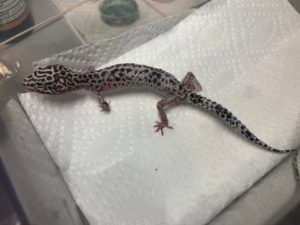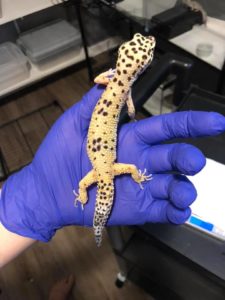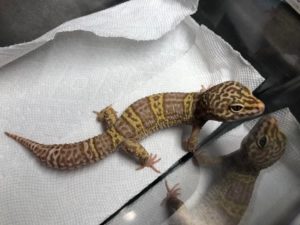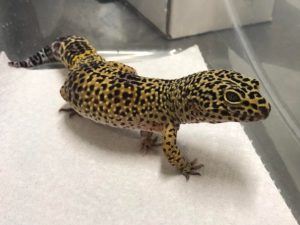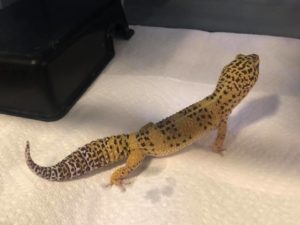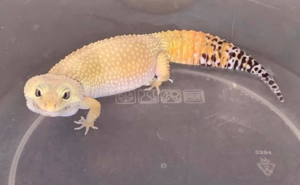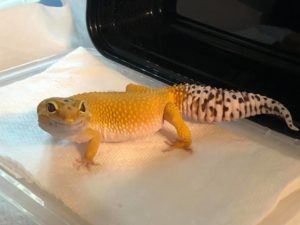RESCUE IS THE TREATMENT.
EDUCATION IS THE CURE.
Caging
Some sources recommend cages as small as a 10 gallon, we personally believe that a 20 gallon cage should be the absolute minimum for an adult. A 40 gallon tank is even better! Plastic tubs of similar sizes can also be modified into suitable enclosures. Leopard geckos are terrestrial, so the cage should be longer than it is tall to provide the maximum amount of floor space.
Decor
Leopard geckos should be provided with 3 hides – a hot hide, a cool hide, and a moist hide. The moist hide should be filled with damp paper towels or sphagnum moss and should be placed in the middle of the tank (half on/half off the UTH pad). Fake plants and structures should be added to allow your leopard gecko to climb and explore.
Substrate
particulate substrate.
Humidity
Humidity: The ambient humidity in the cage should be low, at 30-40%. Humidity must be provided via a humid hide, which is a small hide kept humid for the gecko uses when shedding. Any enclosed hide can be used and then filled with damp paper dowels or damp sphagnum moss.
Heating
- Heat Pads: We personally favor using under tank heat pads controlled by reptile thermostats. These are safe to use and keep the hot spot at a consistent temperature. They also do not dry out the air and don’t give off any bright light, which may cause stress in some leopard geckos if they’re not provided with enough coverage. We’ve personally had great success using regulated heat pads while rehabbing leopard geckos with various medical conditions.
- Radiant Heat Panels/CHEs: Overhead heating elements, such as radiant heat panels and ceramic heat emitters may also be used. These produce heat, but do not emit light. Radiant heat panels do a good job of dispersing heat inside larger PVC cages. Both of these options can be used at night without interrupting the animal’s day/night cycle.
- Incandescent/Halogen Lighting: Some leopard gecko keepers strongly recommend providing heat with a halogen light as they have been shown to most closely replicate the sun by providing IR-A, IR-B, and IR-C. The most commonly recommended lights are PAR30, PAR36, or PAR38 outdoor halogen flood lamps. We personally have not seen conclusive evidence that these lamps are more beneficial to reptiles or improve their overall health – but we are keeping up-to-date on current research and are excited to see the results of some ongoing studies. We do believe this to be a viable husbandry option, however, and many keepers are able to keep leopard geckos successfully using these lamps. Strong overhead lighting can dry out the enclosure and may be stressful for some geckos. However, these issues can be rectified. Being an arid species, you can typically avoid any humidity issues by consistently keeping the humid hide moist and clean. By providing lots of decor and foliage, you can give the gecko lots of hiding places to avoid the light if it desires. Also be careful to ensure that the gecko cannot touch the bulb itself, as they are capable of causing burns.
- Reptile-Branded Basking Bulbs: Reptile-branded basking bulbs can also be used, but we find that they have the same downsides as halogen flood lamps without many of the reported benefits. They’re also typically overpriced!
- Night-Time Heating: If a heat pad, radiant heat panel, or ceramic heat emitter are being used, these can be used at night without distrubing the animal’s sleep cycle and no additional night-time heat is needed. If overhead lights are being used as the primary heating source, they should be turned off at night. A temperature drop at night time is OK and is actually believed to be beneficial. In their natural habitat, the temperature often drops down to 60F. However, if the temperature in your house is regularly dropping below 67F, I would considering providing a heating element at night. Deep Heat Projectors are a popular choice for supplying night-time heat, as they produce IR-A and IR-B, and are also reported to provide “deep muscle heating.” This technology is fairly new to the reptile world and we have not seen evidence that it definitively improves overall health or quality of life, but the topic is still being researched. Alternatively, you can also set-up a ceramic heat emitter to turn on only at night.
Lighting
Lighting: Because leopard geckos are nocturnal animals, the necessity of UVB for them is a highly debated topic. Personally, we do provide a 5% UVB bulb for our ambassador leopard gecko, but have kept them successfully with and without UVB and don’t feel that it’s strictly necessary. However, if you have an albino leopard gecko, be aware that strong lights can irritate their eyes. Regardless of what lighting you choose to provide, make sure to provide a day/night cycle by keeping the lights on during the day and turning off all lights at night. If you are not using an overhead heating bulb or UVB light, you can provide this day/night cycle using the room’s ambient lighting or an LED light.
Diet
Supplementation
Water
A small bowl of clean water should always be available and cleaned regularly.
Things You Should NOT Do
Common Health Issues
Metabolic Bone Disease: Captive lizards need supplemental sources of calcium, or else they will develop MBD. We see this frequently in surrendered animals, and in severe cases the animals can die. When a gecko doesn’t have enough calcium, its body will start to pull calcium from its bones to support heart and organ function. Eventually, they get so weak they cannot walk properly, stand, or eat. The first signs of MBD include curved legs and weak jawbones, and this can advance as the gecker loses more calcium from the bones. Always see a veterinarian to get an exam on your animal’s condition; most of the time, your vet will give you a prescription liquid calcium to give orally. You should also correct your diet to include calcium-dusted insects, gut load your insects with a calcium-rich food. Geckos with MBD should be provided UVB lights to help strengthen
their bones.

